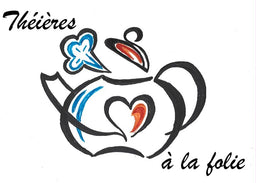
Cloisonné its history its recipe
The principle of cloisonné is to imprison the enamel in circuits formed by fine partitions made of flat copper wire soldered to the body of the object (the teapot), the result being the pigmented patterns. This technique has very ancient origins. in the Middle East. It was use...
Read more
What to know about the silver teapot?
In France, the first use of the teapot dates back to the visit of Siamese ambassadors to the court of Versailles in 1686. Tea is considered precious and is only consumed on auspicious occasions to display the magnificence of royalty .
Read more
Borosilicate, Pyrex, what's the difference?
For some time now we have been talking about borosilicate glass, this wonderful glass which does not fear incredible temperature variations. And then, we hear much less about Pyrex, which nevertheless occupied almost the entire last century.
Read more
The style of a teapot, what are we talking about?
A teapot can evoke a feeling, a memory, an emotion that gives it the style we attribute to it through this filter. It can be romantic, retro, fun, too small, too big, always depending on what you feel when you see it, when you use it, the judgment is partly subjective since it...
Read more
Plum Blossom Jade Explained
When the jade is polished, these shapes filled with minerals take the form of flowers reminiscent of those of the plum tree. Tortuous cracks also filled with minerals evoke branches.
Read more
Jian Zhan his mystery
Jian Zhan 's craftsmanship is characterized by extraordinary, unpredictable glaze colors: Wujin glaze, rabbit hair glaze, oil drop glaze, partridge feather glaze, yao bian etc.
Read more
Dehua or Jingdezhen ceramics?
For centuries, since the Ming dynasty, the city of Dehua has produced porcelain using the Kaolin clay surrounding this region. Originally, the production of this porcelain was used for export and for private daily newspapers. While the city of Jingdezhen enjoyed and benefited ...
Read more
Jingdezhen Chinese Teapots
A little insight into Jingdezhen porcelain and ceramics. In fact we knew them more or less but we didn't know it. The blue and white Yaobian, the green Cedalon, the enamel effect Wucai, the Doucai with a thousand colors and the Rose with complicated and detailed patterns....
Read more
